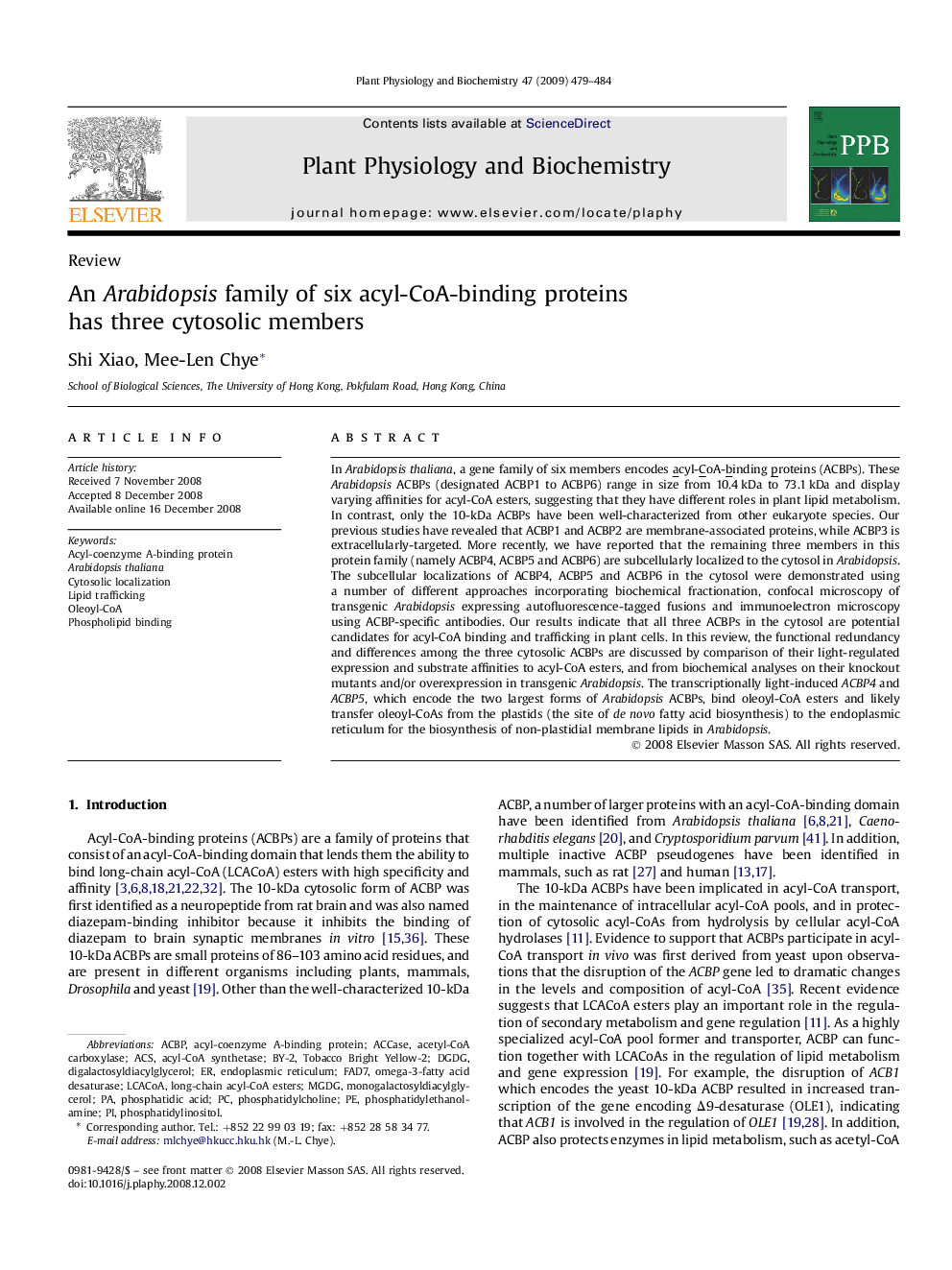| کد مقاله | کد نشریه | سال انتشار | مقاله انگلیسی | نسخه تمام متن |
|---|---|---|---|---|
| 2015256 | 1067539 | 2009 | 6 صفحه PDF | دانلود رایگان |

In Arabidopsis thaliana, a gene family of six members encodes acyl-CoA-binding proteins (ACBPs). These Arabidopsis ACBPs (designated ACBP1 to ACBP6) range in size from 10.4 kDa to 73.1 kDa and display varying affinities for acyl-CoA esters, suggesting that they have different roles in plant lipid metabolism. In contrast, only the 10-kDa ACBPs have been well-characterized from other eukaryote species. Our previous studies have revealed that ACBP1 and ACBP2 are membrane-associated proteins, while ACBP3 is extracellularly-targeted. More recently, we have reported that the remaining three members in this protein family (namely ACBP4, ACBP5 and ACBP6) are subcellularly localized to the cytosol in Arabidopsis. The subcellular localizations of ACBP4, ACBP5 and ACBP6 in the cytosol were demonstrated using a number of different approaches incorporating biochemical fractionation, confocal microscopy of transgenic Arabidopsis expressing autofluorescence-tagged fusions and immunoelectron microscopy using ACBP-specific antibodies. Our results indicate that all three ACBPs in the cytosol are potential candidates for acyl-CoA binding and trafficking in plant cells. In this review, the functional redundancy and differences among the three cytosolic ACBPs are discussed by comparison of their light-regulated expression and substrate affinities to acyl-CoA esters, and from biochemical analyses on their knockout mutants and/or overexpression in transgenic Arabidopsis. The transcriptionally light-induced ACBP4 and ACBP5, which encode the two largest forms of Arabidopsis ACBPs, bind oleoyl-CoA esters and likely transfer oleoyl-CoAs from the plastids (the site of de novo fatty acid biosynthesis) to the endoplasmic reticulum for the biosynthesis of non-plastidial membrane lipids in Arabidopsis.
Journal: Plant Physiology and Biochemistry - Volume 47, Issue 6, June 2009, Pages 479–484